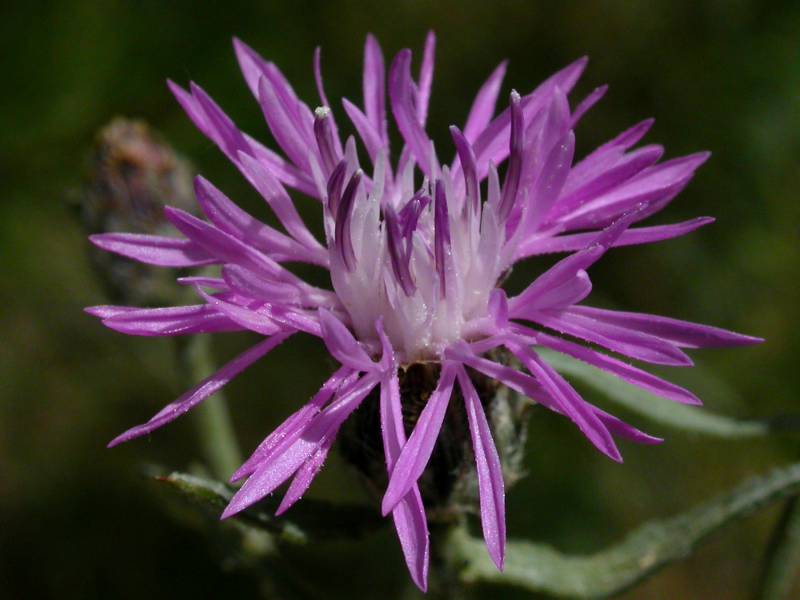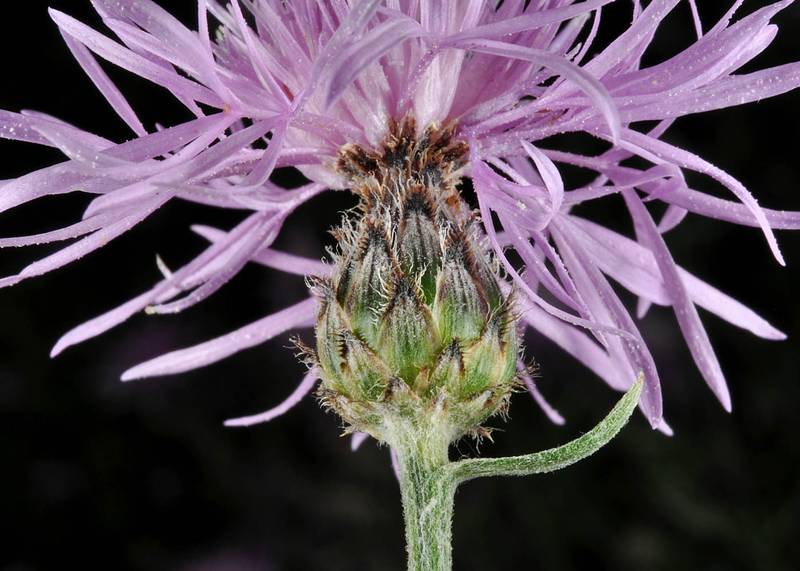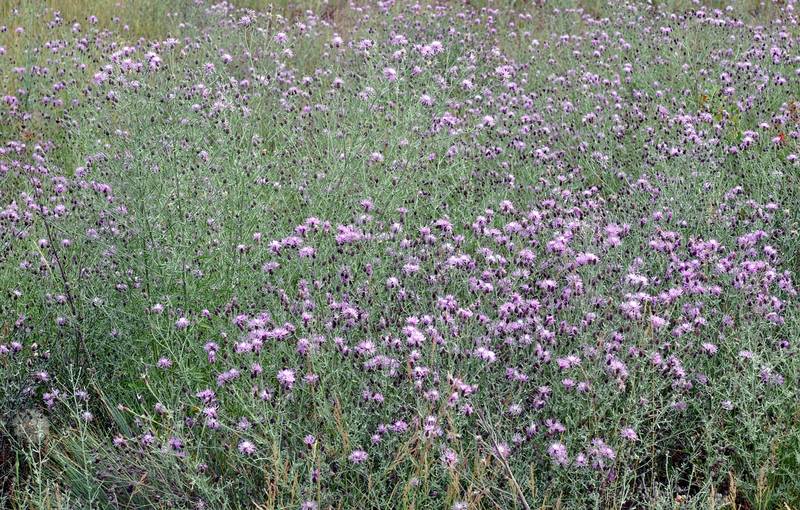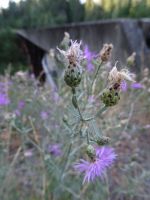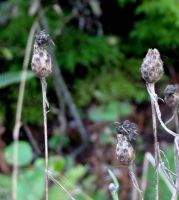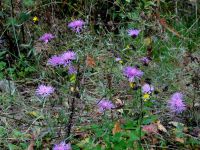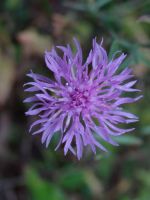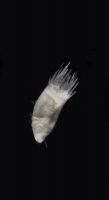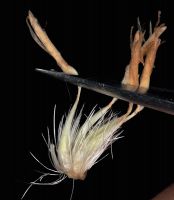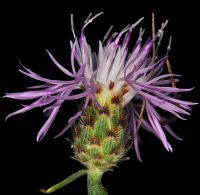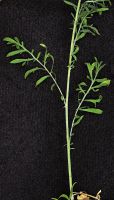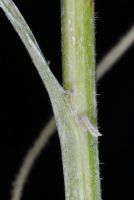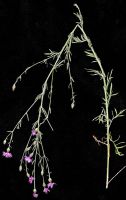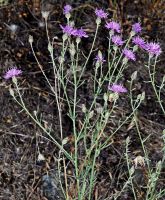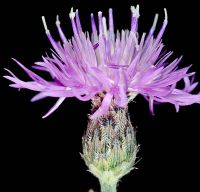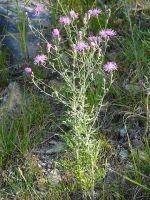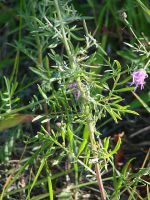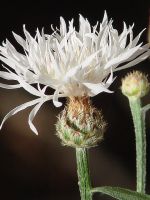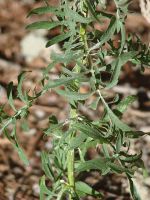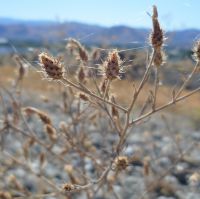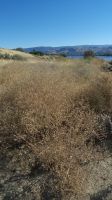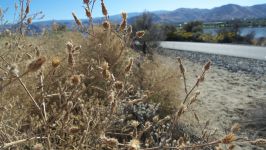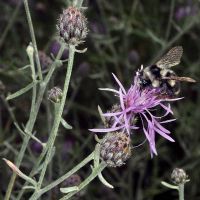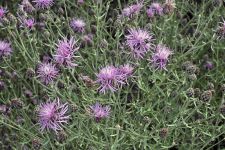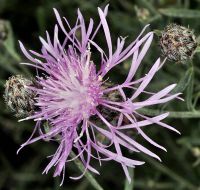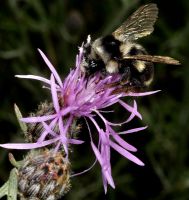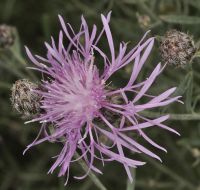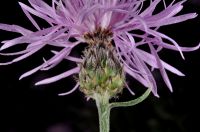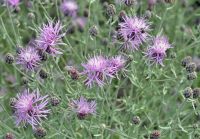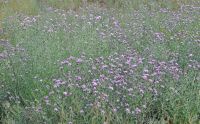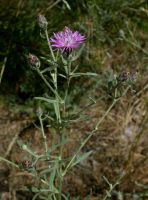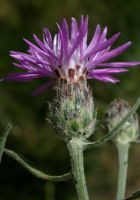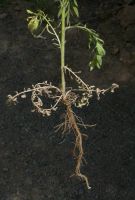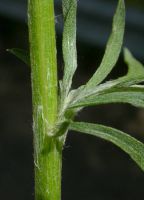Distribution: Occurring on both sides of the Cascades crest in Washington; British Columbia to California, east across North America to the Atlantic Coast.
Habitat: Forest openings, meadows, fields, roadsides, wastelots, and other disturbed open areas from low to middle elevations.
Flowers: June-October
Origin: Introduced from Europe
Growth Duration: Perennial
Conservation Status: Not of concern
Pollination: Bees, flies, beetles, wasps
Tap-rooted, branched perennial, 3-15 dm. tall.
Leaves simple, pinnatifid, with narrow lobes, or the reduced ones of the inflorescence entire, often with glands in small pits.
Heads terminating the numerous branches; involucre 10-13 mm high, the middle and outer bracts with short, dark, comb-like tips; flowers usually pink-purple; pappus bristles up to 2 m. long; receptacle densely bristly.
Achene.
Publication: Sp. Pl. 2: 914. 1753.
-
ssp. australis – spotted knapweed
 Occurring on both sides of the Cascades crest in Washington; British Columbia to California, east across North America to the Atlantic Coast.
Occurring on both sides of the Cascades crest in Washington; British Columbia to California, east across North America to the Atlantic Coast.
PNW Herbaria: Specimen records of Centaurea stoebe in the Consortium of Pacific Northwest Herbaria database.
WA Flora Checklist: Centaurea stoebe checklist entry.
OregonFlora: Centaurea stoebe information.
E-Flora BC: Centaurea stoebe atlas page.
CalPhotos: Centaurea stoebe photos.
USDA Plants: Centaurea stoebe information.

